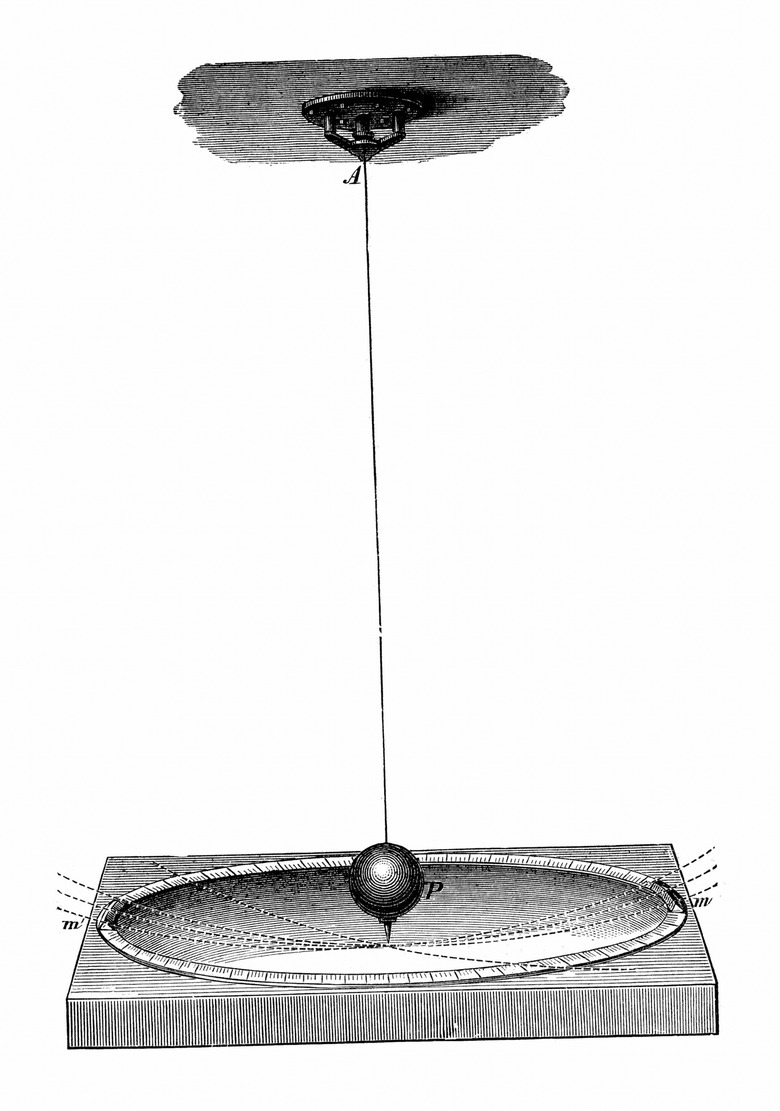Why Is A Pendulum Scientifically Important?
Pendulums are relatively simple devices and have been studied since the 17th century. Italian scientist Galileo Galilei began experiments using pendulums in the early 1600s and the first pendulum clock was invented in 1656 by Dutch scientist Christiaan Huygens. Since those early days, pendulums have continued to have a pivotal role in building more complex machines, as well as contributing to modern understanding of physics.
Principles of Motion
Principles of Motion
A pendulum is comprised of a weight, called a bob, hanging from a fixed point. When the pendulum is activated, or pulled in any one direction, it exhibits a principle of motion called inertia, which is Newton's first law of motion. It states that a body at rest, stays at rest and a body in motion stays in motion, unless acted on by an outside force. Pendulums provide proof of Newton's first law of motion.
Time Keeping
Time Keeping
Shortly after Galileo began formally studying the properties of pendulums, he described his observations in a letter to a friend. Galileo's letter described his discovery that the time it takes for a pendulum to swing back and forth remained constant. Later, Santorio began using a pendulum to measure a patient's pulse. In the same century of Galileo's discovery, pendulums began to be used as a replacement for unreliable mechanisms that powered clocks.
Measuring the Effects of Gravity
Measuring the Effects of Gravity
Galileo used a pendulum to conduct his measurements on the effects of gravity. He observed that the reason the pendulum moves back toward the resting position is because of the force of gravity pulling the bob downward. Using math, and the fact that the pendulum oscillates at a constant rate, Galileo was able to determine the approximate effects of the pull of gravity. These early experiments and the use of pendulums allow scientists to calculate the shape of the Earth.
Proof that the Earth Spins
Proof that the Earth Spins
Scientists have postulated that the earth is a round spinning orb for thousands of years. However, it wasn't until 1851—200 years after Galileo began his experiments—that another scientist was able to prove the Earth spins. Foucault, a French physicist, used a pendulum to demonstrate not only that the Earth spins, but also that it takes 24 hours to do so. Foucault's demonstrations show a pendulum that appears to rotate. Actually, the pendulum set up makes rotation impossible, which means it is the floor beneath the pendulum that rotates.
Cite This Article
MLA
Jaebi, Iam. "Why Is A Pendulum Scientifically Important?" sciencing.com, https://www.sciencing.com/pendulum-scientifically-important-8710180/. 24 April 2017.
APA
Jaebi, Iam. (2017, April 24). Why Is A Pendulum Scientifically Important?. sciencing.com. Retrieved from https://www.sciencing.com/pendulum-scientifically-important-8710180/
Chicago
Jaebi, Iam. Why Is A Pendulum Scientifically Important? last modified March 24, 2022. https://www.sciencing.com/pendulum-scientifically-important-8710180/
